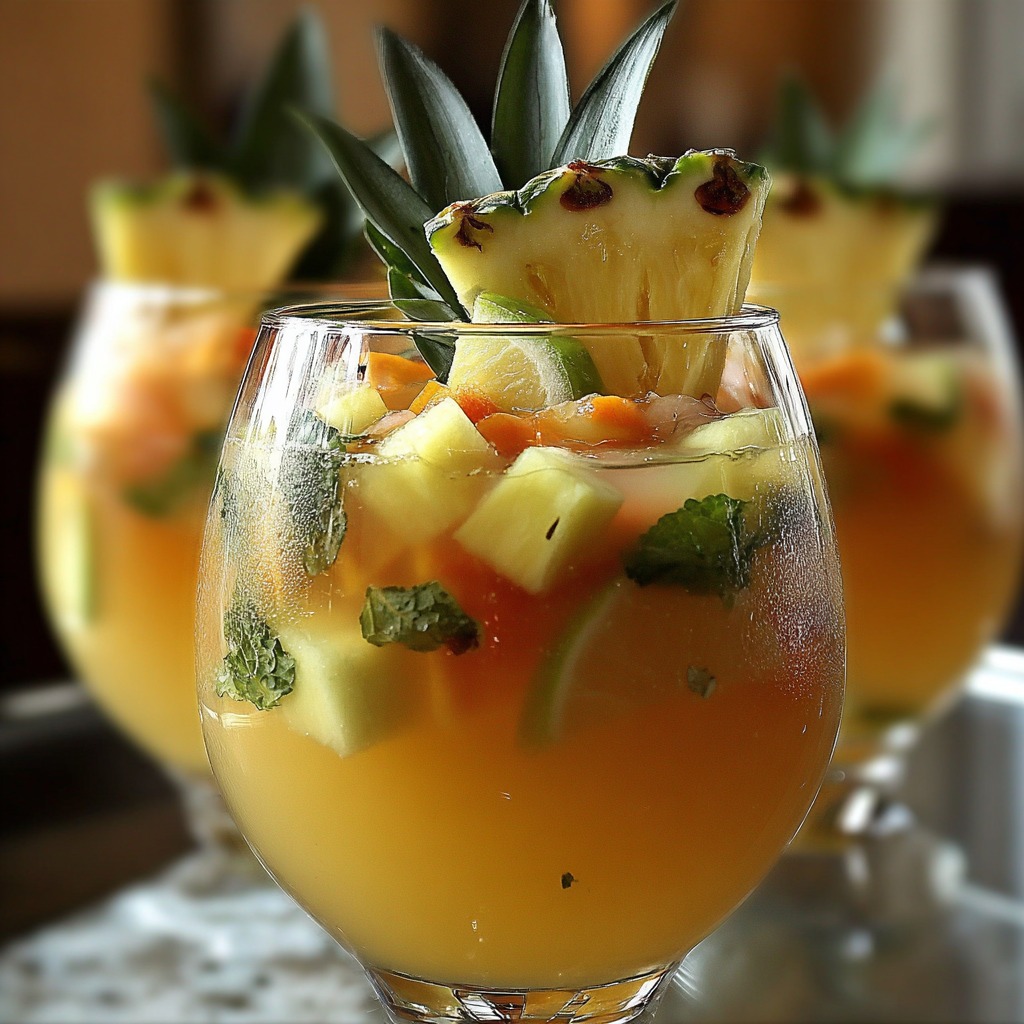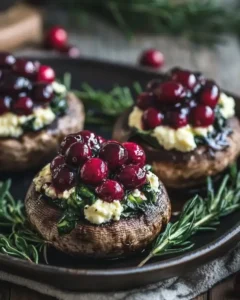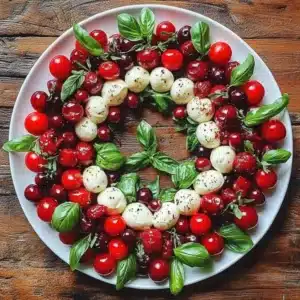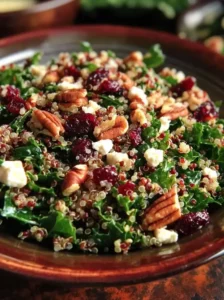Tropical Pineapple Sangria Recipe: A Refreshing Twist on a Classic Delight
Picture yourself on a sunlit terrace, a gentle breeze rustling through the palm trees, the soothing sound of ocean waves nearby. All you need is a glass of Tropical Pineapple Sangria to complete this idyllic scene. This enticing recipe infuses the classic sangria with a sun-kissed tropical twist, combining juicy pineapple, fresh citrus slices, and a hint of mint to create a vibrant, refreshing beverage perfect for any occasion.
Our Tropical Pineapple Sangria isn’t just a drink; it’s an experience that combines the essence of a tropical getaway with the relaxing delight of a homemade sangria. The fusion of ripe pineapple and citrus flavors, punctuated by the effervescence of sparkling wine, results in a drink that is both refreshing and invigorating. Every sip will transport you to your favorite beach vacation, making it an ideal companion for backyard gatherings and summer celebrations.
Embracing these tropical notes, the Tropical Pineapple Sangria is beautifully versatile and easy to make. It requires minimal prep and no cooking, making it a breezy choice for those who enjoy simple, delicious drinks. The recipe yields enough to share with friends, encouraging a laid-back atmosphere for laughter and relaxation. Let’s dive into the highlights and discover why this Tropical Pineapple Sangria will become your go-to recipe for casual entertaining and warm-weather enjoyment.
Quick Recipe Highlights
- Flavor Profile: This sangria offers a sweet and tangy flavor with ripe pineapple and a burst of citrus.
- Texture: The drink is smooth with a light fizz from the sparkling wine, offering a refreshing mouthfeel.
- Aroma: You’ll smell hints of sweet pineapple mingling with citrusy notes, making every sip an aromatic pleasure.
- Visual Appeal: Bright, colorful slices of fruits float atop the sangria, creating a visually appealing and enticing drink.
- Skill Level Needed: Even beginners can craft this sangria with its straightforward ingredient assembly.
- Special Equipment: A large pitcher or punch bowl is essential for mixing and serving the sangria.
Recipe Overview
- Difficulty Level: This recipe is easy, requiring only basic slicing and mixing techniques. Perfect for beginners or those short on time.
- Category: The Tropical Pineapple Sangria falls under beverages, perfect for parties, brunches, and casual gatherings.
- Cuisine: Drawing inspiration from traditional Spanish sangria, this recipe blends it with tropical influences.
- Cost: Moderate, with costs focused on the sparkling wine and fresh pineapple. Seasonal shopping can reduce expenses.
- Season: Best for spring and summer due to its cooling characteristics and the availability of fresh fruits.
- Occasion: Ideal for barbecues, beach outings, picnics, or any event where a refreshing drink is desired.
Why You’ll Love This Recipe
The Tropical Pineapple Sangria stands out with its distinct balance of flavors. The sweet and tangy notes of pineapple and citrus complement the subtle minty undertones, making it a palate-pleaser. This concoction is not just tasty but also versatile, making it an excellent complement to various culinary creations or as a standalone delight.
Convenience is another benefit of this recipe. With its simple preparation that excludes cooking, the Tropical Pineapple Sangria is a breeze to whip up. In a matter of minutes, you can have an impressive beverage ready to serve, leaving you more time to enjoy the company of friends and family.
While it is an indulgence, the sangria offers nutritional advantages due to its inclusion of fresh fruits. Pineapple is rich in vitamin C and antioxidants, while citrus fruits offer additional vital nutrients, providing a healthful element to your drink choices.
Not to be overlooked is the social value of this tropical beverage. It’s designed to be shared, creating an atmosphere of camaraderie and joy. Whether served at a party or a casual afternoon gathering, it fosters an environment of relaxation and enjoyment among guests.
The accessibility of ingredients contributes to the drink’s appeal. The elements are readily available in most grocery stores and markets, making this delicious recipe both affordable and easy to find. The Tropical Pineapple Sangria is a delightful option for those looking to bring a taste of the tropics home without breaking the bank.
Historical Background and Cultural Significance
The roots of sangria trace back to Spain, where it was traditionally made by mixing wine with a medley of fresh fruits to create a refreshing drink suited for warmer climates. Over time, the practice spread across the world, evolving with various local influences, yet maintaining its foundation as a beloved concoction.
Culturally, sangria is connected with festivity and social gatherings. It’s often prepared for communal meals and celebrations, fostering connections and enjoyment among participants. The Tropical Pineapple Sangria is a modern iteration, reflecting the blending of cultures and tastes in today’s global culinary landscape.
The evolution of sangria recipes, like the Tropical Pineapple Sangria, highlights flexibility and creativity, allowing for the incorporation of regional ingredients and innovations. Each variation tells a story of local flavor preferences and seasonal availability, adding to its enduring charm.
Regional variations are numerous, with each locality adapting the base recipe to include specific fruits or spirits that resonate with the cultural palate. Our tropical version integrates the rich, juicy notes of pineapple, uniquely capturing the essence of Pacific and Caribbean nectar.
Ingredient Deep Dive
Pineapple has a long-standing reputation as a symbol of hospitality and welcome. Its inclusion in drinks such as Tropical Pineapple Sangria is especially fitting, offering both sweetness and a hint of tartness that brings a well-rounded flavor profile. When selecting pineapple, look for fruit that feels heavy for its size and gives slightly to pressure with a sweet aroma at the base.
Pineapple is also a vitamin powerhouse, providing essential nutrients like vitamin C, manganese, and dietary fiber. This nutrient profile not only enhances the drink’s taste but also offers health benefits, contributing to your daily intake of important vitamins.
Citrus fruits, tangy and aromatic, have been integral to drinks and dishes across cultures, enhancing flavors with their vibrant zest and juice. They bring brightness to the Tropical Pineapple Sangria, cutting through sweetness to add depth and dimension.
When purchasing citrus for your sangria, choose firm fruits with smooth skin and a strong citrus scent. Store them in the refrigerator to prolong their freshness and juiciness.
Sparkling wine is essential for a touch of effervescence in the Tropical Pineapple Sangria. Choose a dry style, like a Cava or Prosecco, to balance the sweetness of the fruits. The bubbles add a lively, festive element to your drink, making each sip delightful.
Common Mistakes to Avoid
- Using under-ripe pineapple can make the sangria taste bland. Make sure to choose fruit with a sweet aroma and slight give.
- Neglecting fresh citrus can result in a lackluster flavor. Ensure your fruits are fresh and juicy, contributing vibrant acidity.
- Over-stirring can flatten the sparkling wine, so gently mix the sangria to maintain effervescence.
- Skipping the chilling step will prevent the flavors from melding properly. Allow time in the refrigerator for the best taste.
- Adding too much sugar can overwhelm the natural sweetness. Taste as you go to adjust to your preference.
- Using warm wine will alter the refreshing quality. Chill your wine before adding it to the sangria mix.
- Opting for cheap wine may compromise taste. Select a reasonably priced wine that you’d enjoy drinking by itself.
- Not letting the sangria sit can hinder flavor development. Give it at least an hour in the refrigerator to meld properly.
- Serving without extra ice can dilute flavors quickly. Use large ice cubes or freeze portions in advance for best results.
- Ignoring presentation diminishes the experience. Add garnishes like mint sprigs or sliced fruits to enhance visual appeal.
Essential Techniques
Correct slicing of fruits is crucial for enhancing their infusion into the drink. Slice fruits thinly to maximize surface area, ensuring they impart flavor and aroma more effectively. Aim for uniformity to create an attractive presentation in the pitcher.
Gentle mixing is essential, especially when combining the sparkling wine to preserve the fizz. Use slow, deliberate movements to combine ingredients without losing carbonation, ensuring your sangria remains lively and refreshing.
Pro Tips for Perfect Tropical Pineapple Sangria
To intensify flavor, consider chilling your glassware prior to serving. It will help maintain your sangria’s temperature longer, providing a refreshing experience from start to finish.
Introduce variety by including seasonal fruits available at your local market. Mango or kiwi can add unique flavor dimensions, providing additional tropical notes to your sangria.
Experiment with adding a splash of coconut water or juice for a tropical twist that deepens the island-vibe experience. This addition can enhance the overall profile, providing a richer flavor palette.
Don’t hesitate to prepare a fruit-infused simple syrup. It can serve as a bespoke sweetener, designed specifically to align with your taste expectations and adjust sweetness levels.
For a festive look, consider using decorative ice cubes composed of fruit and mint leaves. These not only look spectacular but will infuse flavors as they melt, enhancing your drink further.
To ensure a balanced flavor, taste frequently as you prepare. Adjust the levels of citrus, sweetness, and bubbles to your preference, encouraging a drink that is truly personal and perfect.
Variations and Adaptations
Regional variations can have a profound impact on ingredients and presentation. Embrace your local produce to create a version of Tropical Pineapple Sangria that reflects regional availability and taste.
For seasonal adjustments, consider utilizing in-season fruits. This can transform the sangria into a reflection of the current market offerings, keeping the drink fresh and aligned with seasonal flavors.
Dietary modifications could involve using a non-alcoholic sparkling drink in place of wine for a family-friendly version. This allows all ages to enjoy the crisp, satisfying tastes without the alcohol content.
To explore flavor variations, consider using flavored sparkling waters that can add nuanced tastes to the sangria. Lime or berry flavors work exceptionally well with pineapple and citrus.
For those interested in texture modifications, consider incorporating diced fruit as a garnish or puree into the mix to create a textured drink experience, adding another layer of richness.
Presentation alternatives abound with Tropical Pineapple Sangria. Serve it in a hollowed-out pineapple for a showstopping visual, or use coconut shells for an exotic touch, bringing your tropical theme to life.
Serving and Presentation Guide
Plating techniques like choosing the right glassware can elevate your presentation. Opt for clear, wide-brimmed glasses that showcase the vibrant colors and encourage aromatics to rise.
Garnish ideas are numerous, from mint sprigs to citrus wheels perched on the rim. They offer a visual delight and enhance the sensory experience with each sip.
Traditional accompaniments include salty snacks or tropical appetizers like ceviche, which complement the sweet, tangy notes of the sangria and produce a harmonious tasting experience.
Modern serving suggestions might involve innovative pairings, such as spiced nuts or mild cheeses that enhance the refreshing attributes of the drink, encouraging varied taste profiles.
Temperature considerations focus on keeping the sangria cold. Use an ice bucket for pitchers when serving outside to maintain that refreshing chill, compensating for warmer temps.
Portion control is key when considering sangria as a part of meal service. Carefully measure pours to ensure each guest receives an equal share of the vibrant and flavorful mix.
Wine and Beverage Pairing
Wine pairings are best kept light and refreshing when serving with sangria. Opt for white wines with a crisp finish, enhancing the bright, tropical flavors present in the drink.
For non-alcoholic alternatives, chilled herbal iced teas can make a delightful pairing, providing a refreshing counterpart to the sweet and tangy notes of the sangria.
Include options like light, fruity coffee or tea blends on cooler days, maintaining a cohesive taste profile that aligns with the tropical sensations of the sangria.
Temperature considerations remain crucial when pairing beverages. Aim for chilled options that can stand against the refreshing nature of the sangria, preserving the cool, invigorating quality.
Serving suggestions contemplate serving plenty of options, from ice-cold water infused with complimentary fruits to other light, refreshing drinks that accent the sangria’s essence.
Storage and Shelf Life
Storage methods entail keeping leftover sangria chilled in the refrigerator, allowing it to stay fresh and flavorful. Use sealable containers to maintain quality and prevent absorption of fridge odors.
Temperature requirements are best at just above freezing, maintaining ideal conditions for both freshness and flavor preservation. This should be coupled with the chilling of your serving glassware.
Container recommendations favor glass for its non-reactive properties which won’t impart unwanted tastes into the beverage, while also clearly displaying the beautiful fruit pieces.
Recognizing signs of spoilage involves keeping a watch for off odors or discoloration in the fruits, indicating the sangria might no longer be safe to consume.
Reheating is not necessary with sangria, as it is meant to be served chilled. However, refreshing chilled flavors can be reinvigorated by adding fresh citrus juice or additional sparkling wine.
Freezing guidelines suggest freezing individual portions of just the fruit, should you want future fresh garnish, but it’s best to serve or finish any sangria within a couple of days post-preparation.
Make Ahead Strategies
A prep timeline allows for planning ahead; slicing fruits can be done a day in advance and stored in the fridge. This ensures minimal hassle when the time comes to assemble the drink.
Storage between steps focuses on maintaining freshness of prepared elements. Airtight containers prevent oxidation and preserve flavor, ensuring components are cocktail-ready when aggregation begins.
Quality impact assessments recognize that some flavors enhance over time, such as infusing the fruit longer for depth of taste, though balance is critical to avoid over-extraction and bitterness.
Assembly tips highlight keeping steps organized and efficient, arranging sections of fruits and ice, so the final presentation is cohesive and appealing.
Reheating guidelines are unnecessary, but preserving coolness up until serving is imperative. Steps like chilling your glassware and utilizing iced serving pitchers contribute to overall drink quality.
Fresh element additions can involve a quick fresh fruit twist just before serving, reviving the overall visual appeal and aroma while entertaining guests with a refreshing pop of color and scent.
Scaling Instructions
Scaling instructions help you prepare for either intimate gatherings or larger parties. Halving the recipe can create a personal or small family batch, with timings adjusting easily for proportions.
Doubling or tripling allows for more substantial yield, though careful attention must be paid to balance and logistical factors, ensuring everything scales smoothly without flavor disruption.
Equipment adjustments might consider larger serving vessels or additional pitchers depending on the occasion’s scope, making sure all equipment is proportional to the expected yield.
Timing modifications consider longer maceration for more significant fruit impact, ensuring scale does not interfere with optimal flavor absorption of the wine and fruit essence.
Storage considerations remind you to efficiently size and seal containers based on the batch, preventing waste while maximizing storage capacity through intelligent arrangement.
Nutritional Deep Dive
The sangria’s macro breakdown indicates moderate calorie content, thanks to the natural sugars of the fruits and addition of sparkling wine. Maintaining healthy portions will balance enjoyment with dietary considerations.
Micronutrient analysis highlights the drink’s contribution to vitamin C intake through citrus and pineapple, as well as other antioxidants that provide beneficial dietary augmentation.
Health benefits are seen via the nutrient-rich inclusion of fruits, with antioxidants aiding in wellness and protection against cellular damage, amidst the delight of a flavorful beverage.
Dietary considerations acknowledge that while alcohol contributes some energy content, it can be moderated through non-alcoholic options or by controlling serving size, preserving health-conscious objectives.
Portion analysis assesses caloric and nutrient content per serving, allowing those monitoring intake to adjust according to their dietary regime, making the recipe accommodate various lifestyles.
Weight management tips relate to choosing mixer proportions wisely and balancing alcoholic content with hydrating elements like coconut water, allowing healthy enjoyment without dietary detraction.
Dietary Adaptations
For a gluten-free variation, ensure your sparkling wine is certified gluten-free, which guarantees that no cross-contact occurred during manufacturing.
A dairy-free adaptation can be simply achieved as this recipe naturally avoids dairy, securing inclusivity for lactose-intolerant options effortlessly.
Consider vegan adaptations focusing on confirming that the wine and any purchased garnishes comply with vegan standards, contributing to a plant-focused lifestyle.
A low-carb rendition would utilize low-carb, low-sugar sparkling options, while maintaining servings within dietary limits, leveraging the natural sweetness of the fruit.
For keto, everything can be kept compliant by selecting keto-friendly wine and carb-conscious substitutes like zero-sugar soda, stabilizing carb intake at preferred counts.
Paleo adjustments are informed by traditional sparkling options and emphasizing fresh produce, while avoiding refined sugars contributes deliciously to the dietary framework.
Exploring low-FODMAP possibilities involves eliminating high-FODMAP fruits and adjusting the wine choice, creating a beverage suited to specific digestive needs with careful selection.
Troubleshooting Guide
Should texture issues arise like mushy fruit, keep slicing consistent and fresh, preventing over-soaking through vigilant timing and preparation adjustments.
Flavor balance deserves attention, addressing over-sweetness with added citrus or diluting with low-sugar sparkling water, achieving the ideal taste.
Temperature problems can result from improper chilling; ensure every component, from glassware to ingredients, maintains refreshing temperatures by storing appropriately.
Equipment challenges are remedied by efficient organization – having ample stirring and serving utensils aids in seamless execution and ensures you’re prepared.
Ingredient substitutions may involve considering price or availability, ensuring replacements adhere to the economical convenience while aligning with desired flavors.
Timing concerns can lead to incomplete flavor development; maintain adequate chilling and preparation windows, fostering depth and complexity without compromising on the event timeline.
Recipe Success Stories
Community feedback continually praises Tropical Pineapple Sangria for its delightful balance of flavors and its ability to coexist with festive atmospheres, making it a crowd favorite.
Variation successes include numerous shared stories where individuals have artfully tweaked the recipe to cater to personal flavor preferences, continuously showcasing the versatility of this engaging drink.
Adaptation stories further narrate tales of hostesses integrating hawaiian influences, achieving a fusion imbued with coconut and passionfruit, illustrating receptivity to cross-cultural flavor profiles.
Reader suggestions frequently point to experimenting with different acidity levels through additional lime or zest, emphasizing the recipe’s customizable potential expressed by its fans.
Photography tips suggest playing with light and angles when capturing your freshly prepared sangria comments among the community encourage entwining creative shots to elevate the lush visual presence of your creation.
Frequently Asked Questions
Increase the sweetness naturally by adding ripe pineapple or a touch of agave syrup. Ensure your fruits are fresh and you can taste again after macerating to ensure flavor concentration.
How do I add a spicy kick to my sangria?
Infuse your Tropical Pineapple Sangria with a jalapeño slice for a subtle spice or include a dash of spicy bitters for depth.
Can I prepare this sangria ahead of time?
Yes, you can prepare most elements up to a day ahead. Just avoid adding sparkling elements until serving. This ensures you maintain potential fizz.
What are some non-traditional fruit options for variations?
Explore star fruit, papaya or guava to introduce exotic flavors, each bringing their own intriguing floral or citrus elements into the blend.
Can I use a sweet wine instead of sparkling?
Replace it with a sweet white wine, which may transform the tasting experience. Adjust your citrus content accordingly to handle the enhanced sweetness.
What additional garnishes work?
Try edible flowers like hibiscus or pansies – they introduce decadence while maintaining drinking suitability, avoiding toxic counterparts.
What type of mint is best for garnish?
Spearmint offers the best intensity without overwhelming the drink. Ensure leaves are fresh to prevent bitterness and wilt.
Do I have to use sugar? Are there alternatives?
Stick to natural sweeteners such as honey, agave, or monk fruit to sustain the recipe’s pleasant edge while complying with dietary restrictions.
Is there an alcohol-free wine that works well?
Yes, opt for a premium non-alcoholic sparkling wine. Look for flavor profiles similar to regular Albarino or dry wines for comparable vibrancy.
Can children enjoy a version of this drink?
Offer sparkling water with an array of the sliced fruits, ensuring pineapple and citrus maintain their prominent play and result in an inclusive version.
Can I pressure carbonate this sangria?
Proceed cautiously, ensuring no gas pressure discrepancy leads to accidents. Carbonation remains viable, though icy spritzers pose a safer choice without equipment knowledge.
Additional Resources
Related recipes within the sangria family offer strawberry or berry-focused variations, allowing experimentation with an array of fruity profiles.
Technique guides emphasize perfect slicing and efficient barrel storage methods. Expertise in maceration boosts the depth your recipe achieves.
Ingredient information is invaluable. Detailed articles regarding pineapple’s digestive benefits or the anti-inflammatory features of certain citrus fruits enrich your knowledge.
Equipment recommendations focus on high-quality pitchers and attractive glassware, complementing flair while avoiding material that may compromise the drink’s quality.
Seasonal variations integrate with compatible events. Embrace warm-climate vibes through predation for summer soirees, DIY autumn twist, or personal holiday favorites.
Print
Tropical Pineapple Sangria
Description
A refreshing and fruity sangria perfect for summer gatherings.
Ingredients
For the Crust:
- 1 bottle of white wine
- 1 cup pineapple juice
- 1/2 cup orange liqueur
- 1 fresh pineapple, peeled and cut into chunks
- 1 orange, sliced
- 1 lime, sliced
- 1 cup club soda
Instructions
1. Prepare the Crust:
- In a large pitcher, combine the white wine, pineapple juice, and orange liqueur.
- Add the pineapple chunks, orange slices, and lime slices to the pitcher.
- Chill in the refrigerator for at least 2 hours to allow the flavors to meld together. Before serving, stir in the club soda for a slight effervescence.
Notes
You can customize the seasonings to taste.





